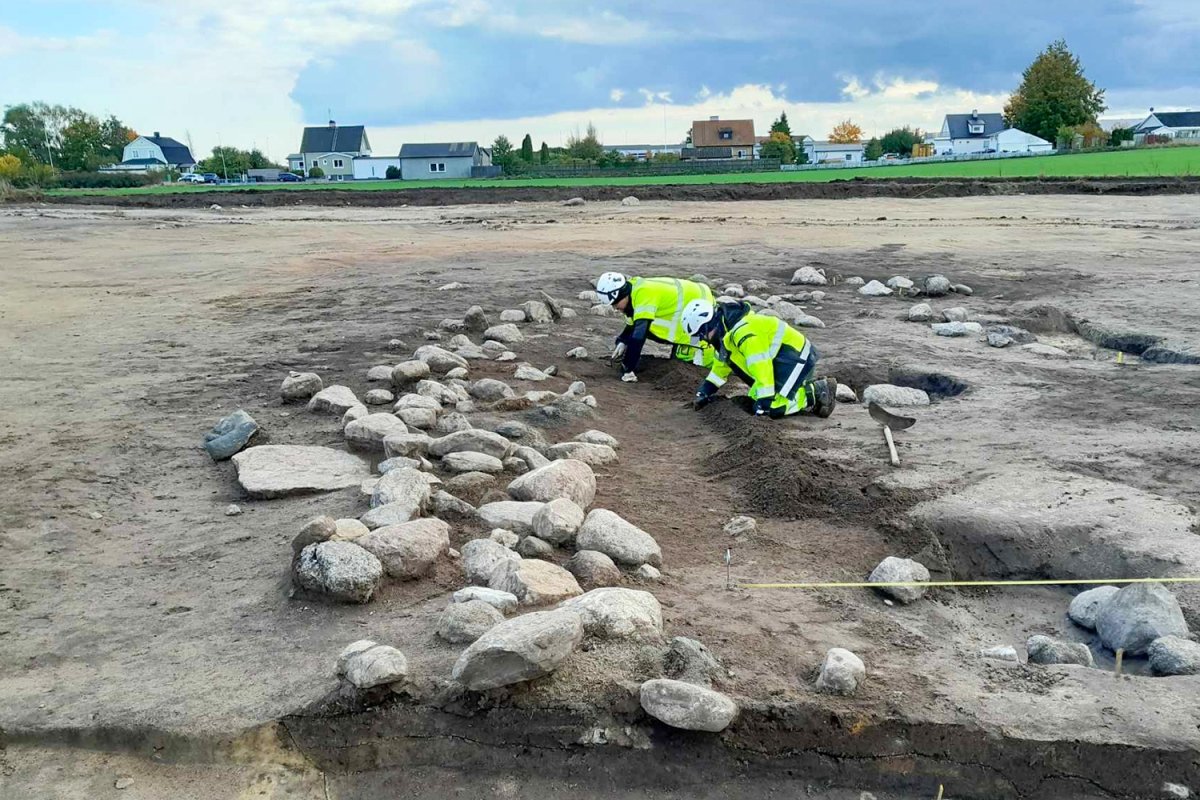Archaeologists have uncovered the remains of a "unique" prehistoric ceremonial site in southern Sweden that dates back to the Neolithic period, or New Stone Age.
The unusual site, located in the municipality of Hammar in Skåne province, consists of a causewayed enclosure—a type of large, prehistoric earthwork—and a number of artifacts thought to be between 5,500 and 5,000 years old. These remains include intact ceramic vessels and large quantities of flint tools, not to mention well-preserved worked bone and horn tools.
"The remains and artifacts are very well preserved, which is extremely unusual for a site from this period," Magnus Artursson, project manager at Arkeologerna (The Archaeologists), National Historical Museums, said in a press release. Arkeologerna, which conducted the excavations at the site, is Sweden's leading consultancy on archaeology and cultural environments.
It is thought that the ceremonial site once served as a ritual gathering place, based on the evidence that has been uncovered to date.

The causewayed enclosure—found at the edge of an ancient wetland—consists of rows of elongated pits, up to around 5 feet deep, laid out in a semicircle. Some of the pits were also lined with stones. The structure, which has a diameter of roughly 165 feet, is similar to others documented outside of Sweden, such as a well-known example in Sarup, Denmark.
"These are unique for the Neolithic period in this country," Artursson said. "We have discovered a ceremonial complex where people gathered at a certain time, or at certain times, during the year to celebrate religious festivals. The finds suggest feasts with ritual butchering and deposition of offerings both in the wetland and in the open pits of the enclosure."
In some of the pits, archaeologists found vessels from the Funnel Beaker culture that appear to have been deposited deliberately. Researchers also recovered large quantities of worked flint and animal bones, as well as other artifacts, such as a fishing hook.
The Funnel Beaker culture was a Neolithic society that existed between roughly 6,300 and 4,800 years ago in Northern and Central Europe—including what is now Denmark, northern Germany, the Netherlands and parts of Poland and Sweden. The culture is named after its distinctive pottery, which featured a funnel-shaped neck on beakers and pots.
This culture is significant because it represents one of the earliest farming societies in Northern Europe, marking a transition from hunter-gatherer to agrarian lifestyles. The Funnel Beaker people practiced mixed farming, cultivating crops such as wheat and barley and raising domesticated animals, including cattle, pigs, sheep and goats. They also continued some hunting, fishing and foraging activities.
The Funnel Beaker culture is also known for its construction of megalithic tombs and monuments, particularly dolmens and passage graves, that were made from large stones. These monumental structures served as burial sites and possibly places of ritual significance.
Do you have a tip on a science story that Newsweek should be covering? Do you have a question about archaeology? Let us know via science@newsweek.com.




















 English (US) ·
English (US) ·